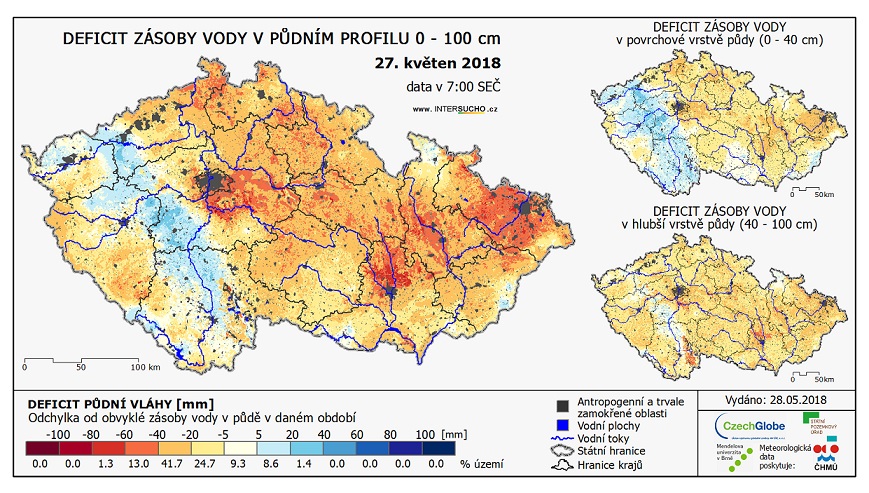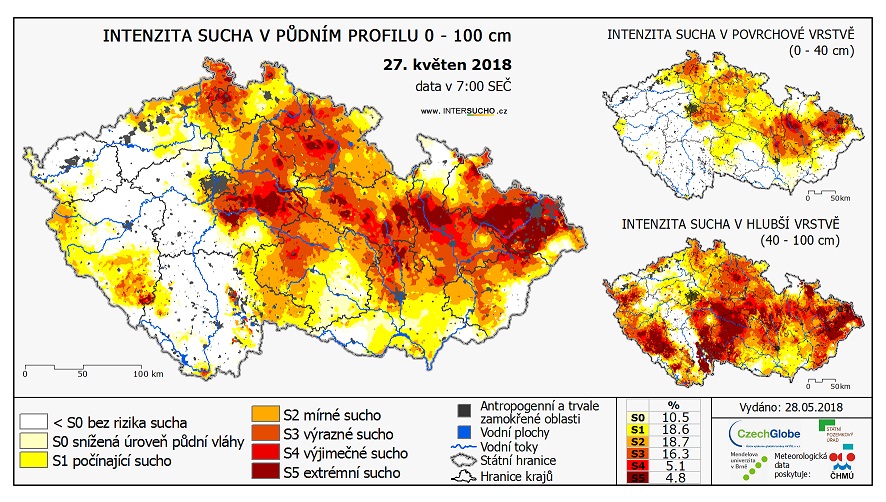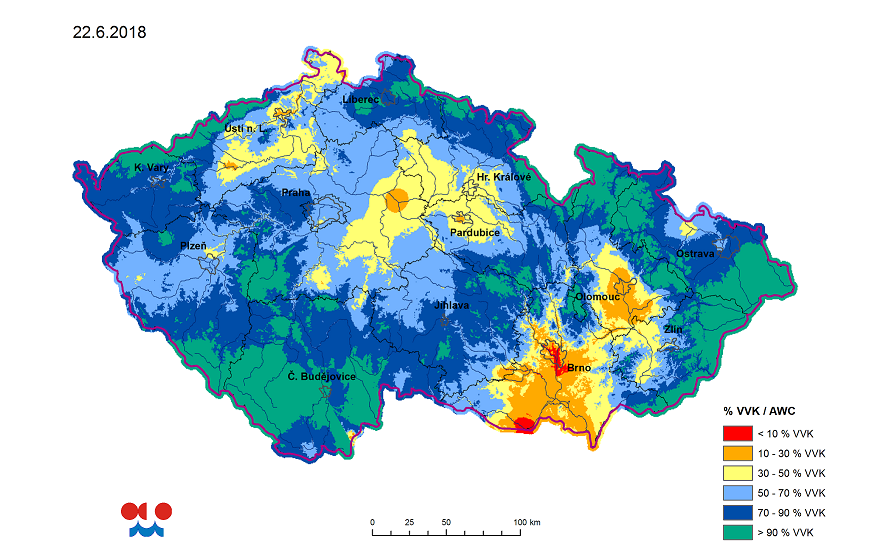Map: Modeled soil moisture in % of AWC (available water capacity; in the chart “VVK”, in Czech) in the layer 0 to 20 cm under grass cover. Released: June 22, 2018. Source: Czech Hydrometeorological Institute.
Brno, Jun 23 (BD) – In Central Europe, the frequency, duration, and severity of droughts have been increasing in recent years. Prolonged droughts affect agriculture, biodiversity, forestry, energy production, tourism, and of course, the general availability of water resources.
The Czech Hydrometeorological Institute (ČHMÚ) reports that last week (from June 11-18), the average precipitation in the Czech Republic was 22 mm (Bohemia 25 mm, Moravia 15 mm), representing 117% of the normal rainfall for this period (Bohemia 141% of normal, Moravia 77% of normal). However, in the long term, the risk of drought remains high, especially in South Moravia, one of the warmest regions of the Czech Republic. For example, from June 20-21, ČHMÚ issued a warning about the risk of wildfires.
A lack of water in some parts of South Moravia “has occurred very often in the past five or ten years,” said Martin Ludvík, chairman of the Czech Fruit Growers’ Union (Read more in our previous article “Drought Bothers Moravian Farmers and North Bohemian Shipowners”).

The World Meteorological Organization (WMO) described the situation in the Czech Republic this year: “Less snow than normal at low and middle altitudes and well below average precipitation resulted in droughts occurring as early as the beginning of May in the Czech Republic, while normally such conditions are typical for July or August.”

Get the news first! Subscribe to our daily newsletter here. Top stories of the day in your mailbox every morning.








